Click Here to View This Page on Production Frontend
Click Here to Export Node Content
Click Here to View Printer-Friendly Version (Raw Backend)
Note: front-end display has links to styled print versions.
Content Node ID: 413777
For decades, loss of control inflight (LOC-I) events have killed more people than any other type of aircraft accident. There are several sobering facts about LOC-I; the threat persists on any flight, at any time, and pilots can have only a few seconds to initiate the proper flight control inputs to safely recover from an aircraft upset.
Many inflight upset events—including those with a perfectly good aircraft—when mismanaged, can quickly escalate into a LOC-I event where the pilot is unable to recover from an unintended extreme deviation from the intended flightpath due to either a lack of skill, altitude, or time, leading to a serious incident or fatal crash. Reliable LOC-I intervention requires early recognition and upset prevention, combined with specialized training to address skill deficiencies for recovery.
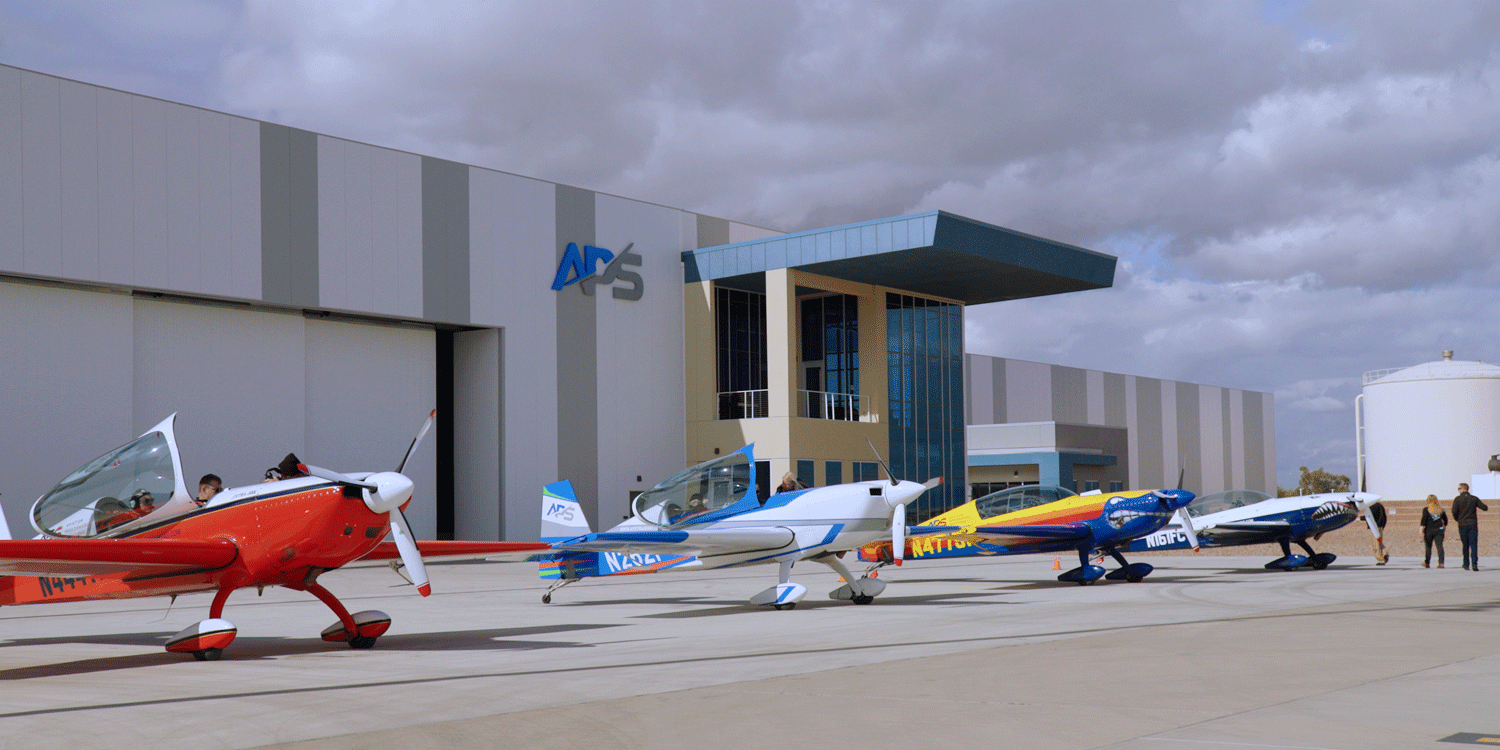
Recent LOC-I events suggest that current upset prevention and recovery training (UPRT) programs—those limited to the use of flight simulation training devices (FSTDs)—may be missing the mark. According to Aviation Performance Solutions CEO Paul “BJ” Ransbury, “Advanced flight simulators, while effective at addressing some of the needed UPRT experience, knowledge areas, and competencies, cannot robustly replicate the psychophysiological effects such as startle factor to a sufficient level of fidelity to reliably prepare pilots for the severity of potential impairment of the pilot and crews’ faculties in a real-world upset event.”
UPRT programs were first mandated for airline pilots in the U.S. in March 2019. These programs utilize an FSTD certified for extended envelope training (EET). UPRT sessions in a simulator have some major limitations and if not used properly may introduce negative training.
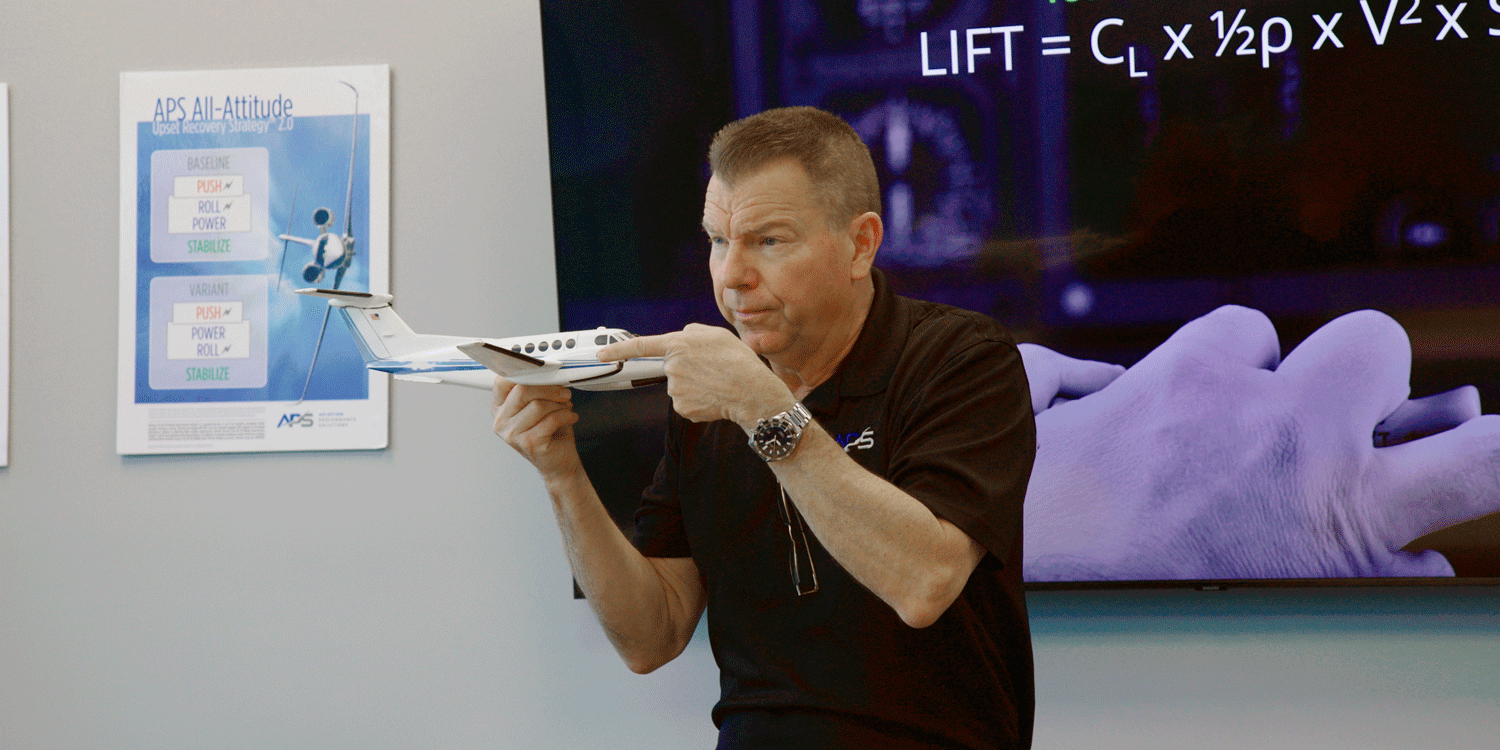
FAA AC 120-111 Upset Prevention and Recovery Training provides guidance to operators establishing UPRT programs and provides some cautions for instructors using FSTDs as a training device. The document notes, instructors must understand that FSTDs are limited to the parameters that have been programmed and evaluated. Operating outside of these parameters may result in the FSTD responding differently than the airplane to a pilot’s control inputs.
Likewise, motion cueing information may not always accurately simulate the associated forces and rates that could be felt in the airplane. As such, due to the limitations of an FSTD, there is no way to provide effective G-awareness training to the student and it is not possible to demonstrate flight in an all-attitude environment (both physiologically and aerodynamically).
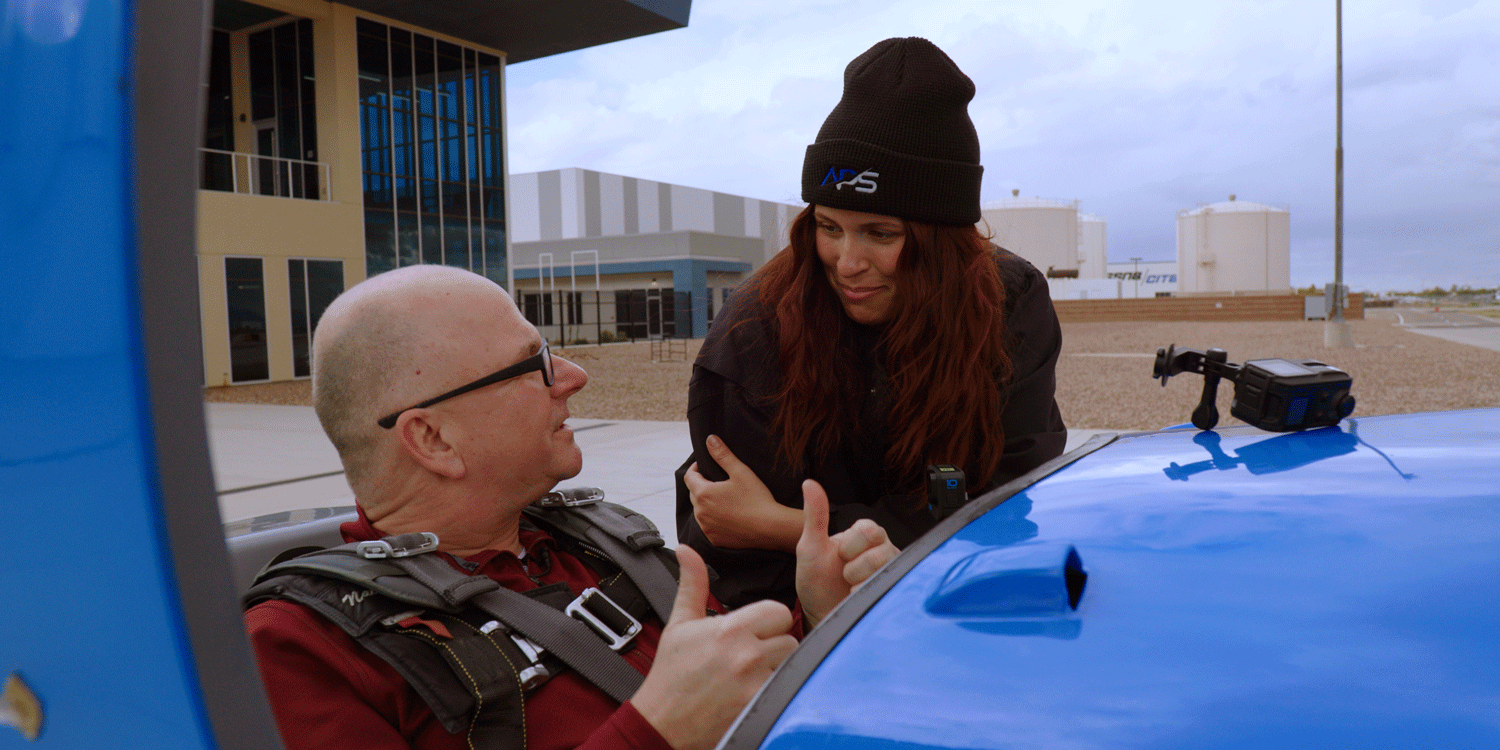
The lack of G-awareness training and accurate motion cueing combined with physiological conditions representative of a real-world upset while being exposed to all-attitude flight profiles have been identified as some of the greatest shortcomings of current “simulator-only” UPRT programs. These areas can only be effectively and safely accomplished “on-aircraft” in aircraft that are capable of all-attitude maneuvering while overseen by an instructor with specialized training in the delivery of UPRT.
Peak UPRT Effectiveness
Aviation Performance Solutions (APS) – the Mesa, Arizona-based UPRT specialist – has developed a comprehensive solution to accomplish peak UPRT effectiveness that is tailored to a pilot or company’s operational profile. Once implemented, this solution provides a long-term “life plan” that includes both initial and recurrent UPRT training.
The core of the APS UPRT program is a comprehensive framework based on proven methods to promote and substantially improve efforts to overcome LOC-I accidents – it is called the “Every Pilot in Control Solution Standard” – or EPIC-S2. This solution is based on proven lessons learned over the past 27 years while directly training over 20,000 pilots and over 30,000 pilots annually by APS-certified UPRT instructors at air carriers, flight schools, and training centers around the world. The integrated EPIC-S2 model includes six critical factors: instructor qualifications (the elite, highly qualified instructor), an integrated program (academic, on-aircraft, and advanced simulation), training program duration for the required intensity, industry compliance with best practices, and the appropriate use of training platforms and other elements such as initial and recurrent training.

APS develops UPRT solutions using modern safety management system (SMS) principles. The goal is to lower or mitigate the risk of a LOC-I incident or accident by employing a comprehensive UPRT program. APS mitigates this risk by maximizing eight vital elements – matched to the most appropriate and effective training platform (academics, on-aircraft, or simulator).
A typical three-to-four-day program, as an example, would include academics (for awareness and primary concepts), on-aircraft, and simulation. The on-aircraft training is critical for human factors (startle, surprise, and fear), all-attitude environment immersion, application of the recovery strategy, G-awareness, and repetition to proficiency. Simulator training is then introduced to reinforce CRM/SRM principals, provide a transfer of skills, knowledge, and recovery strategies on a more representative aircraft and provide the opportunity to safely practice upsets at low-altitude or in poor weather.
Other considerations when developing the training solution include an analysis of a pilot’s operational profile. As an example, the typical business aviation or airline pilot operates a jet-powered aircraft, with two pilots, often at night in IMC, and at an altitude above FL250. This individual’s recommended training plan would include academics, on-aircraft training (both piston and jet), instrument UPRT (IFR), simulator (multi-crew jet), and a high-altitude jet flight, and ideally culminate with a virtual reality session in the operator’s model of airplane.
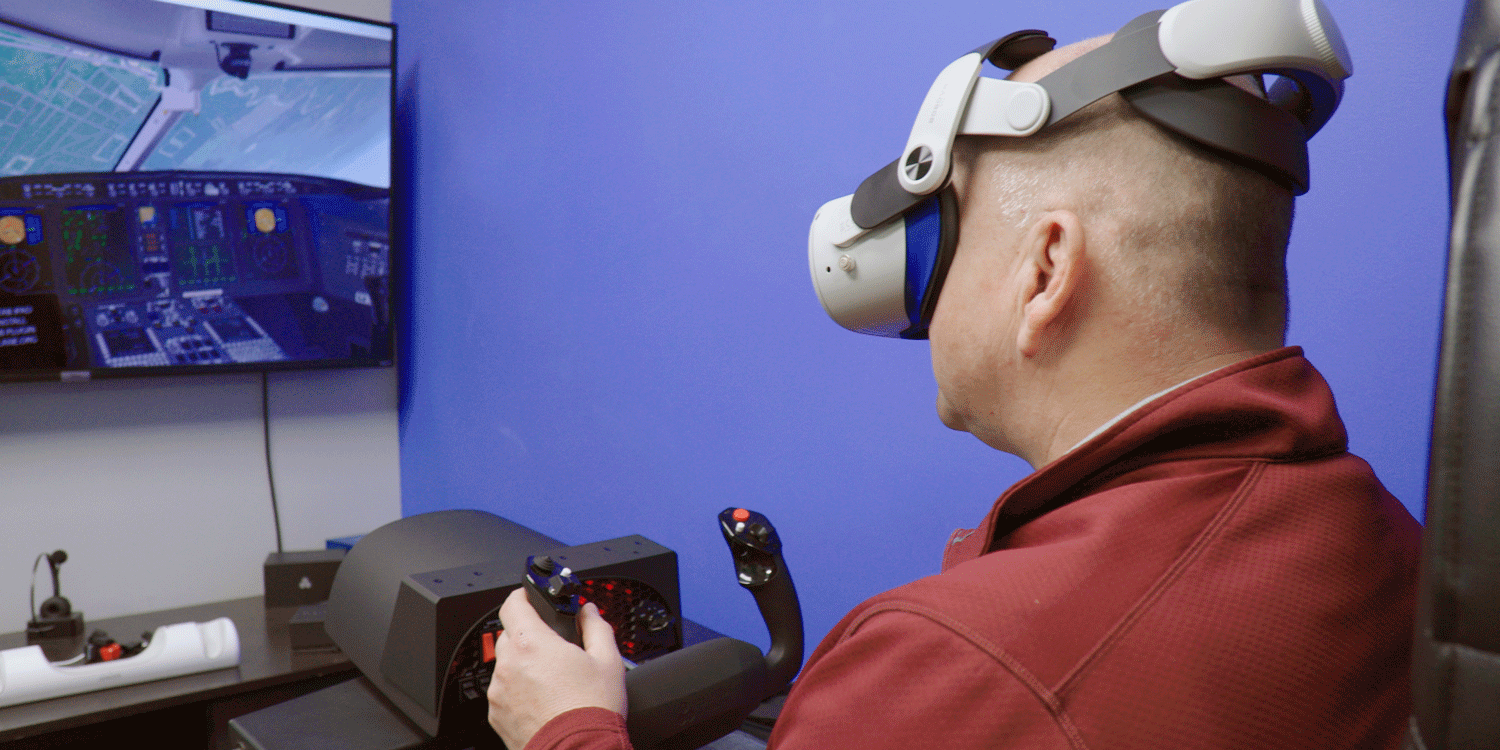
Throughout the course, APS would train the student to master its all-attitude upset recovery strategy (AAURS– APS’s trademarked strategy) to assure resilience and proficiency. Beyond this initial training, APS would then develop a long-term UPRT recurrent training plan for the pilot to maintain proficiency, competency, and confidence throughout their flying career, including ongoing access to online learning modules to reinforce academic knowledge between practical training sessions that typically take place every two to three years.
APS’s new headquarters and training facility is located at the Phoenix-Mesa Gateway Airport (KIWA). APS calls it the “Nexus of UPRT excellence worldwide,” an all-in-one facility that houses classrooms, briefing rooms, observation decks, two simulator bays and simulators, and maintenance and storage facilities for its 10 training aircraft. During each visit to APS, students will enjoy an immersive UPRT experience with top-notch instructors and amazing customer support from its staff.
Purpose-built Training Platforms
According to APS, a critical factor in safe and effective UPRT programs are purpose-built training platforms. On-aircraft training in an all-attitude, aerobatic capable aircraft is essential for pilots to develop manual handling skills and overcome the critical human factors and physiological effects that often derail successful upset prevention and recovery during a real-life event.
At APS, pilots train within the acceptable load limits of the aircraft that they normally operate. Most transport category aircraft are certified to a load limit of +2.5 G’s to -1.0 G’s. APS’s philosophy is to train in aircraft that have a large safety margin above those limits. APS utilizes both piston and jet aircraft capable of aerobatics in its integrated UPRT program that are equipped with a high-definition camera with an audio system to be used as a debrief tool.
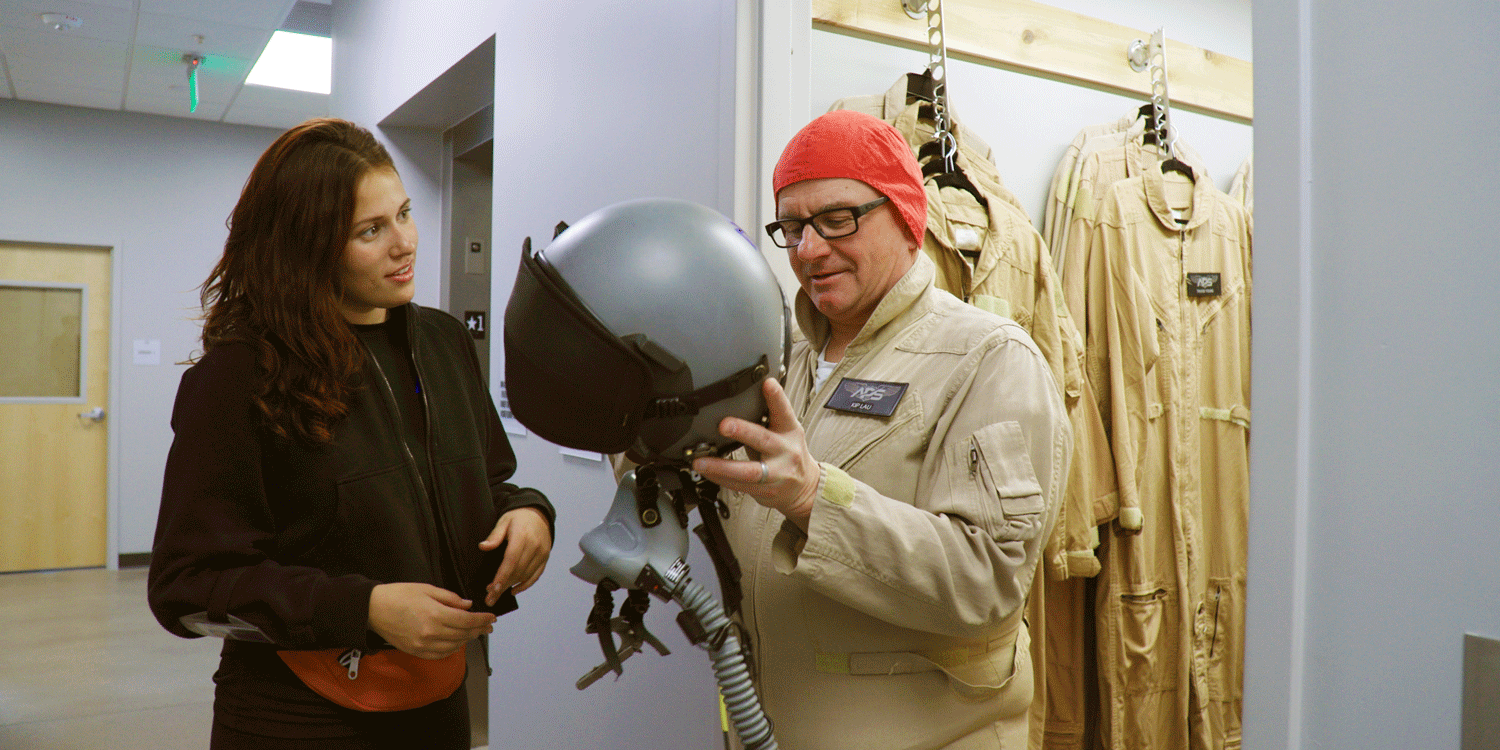
The Extra 300L is an unlimited aerobatic category aircraft certified to +/- 8 G’s with two occupants (+/-10 G’s with one occupant) and no prohibited maneuvers, which makes it a great UPRT training platform. Performance is not a problem with the Extra 300L. It is powered by a 300-hp Lycoming AEIO-540 powerplant and has a snappy roll rate of 400 degrees/sec. APS is the largest operator of the Extra 300L with eight—all based in Mesa.
The SIAI-Marchetti S.211 jet trainer was designed for all-attitude flight instruction of military pilots with strong aerodynamic and structural safety margins (+6 G’s to -3 G’s). It is a subsonic trainer with a mid-wing (moderate sweep) and has a tandem-configured cockpit. APS offers advanced jet training—including high-altitude UPRT—in two S.211s that are based in Arizona. Each aircraft has updated modern Garmin avionics that is representative of the most advanced business aviation transports. Powered by a single Pratt & Whitney Canada JT15D-4C turbofan engine the aircraft is capable of speeds up to .80 Mach and has a low stall speed of around 80 knots. In addition to being a fantastic trainer, the aircraft is pressurized and air-conditioned.

In addition to the training aircraft, APS has two simulators each based at its Mesa headquarters. The ALSIM ALX convertible simulator can be configured to represent multiple aircraft classes from light to medium multi-engine turboprops to business jets to transport category airliners. APS offers class-specific UPRT with this device. The ALSIM device is used within its validation envelope with a modern glass cockpit and transport category control responses. In addition, APS recently introduced virtual reality (VR) technology to provide an additional layer of training for its students. This immersive approach to training allows pilots to finish off their UPRT experience in their own make and model of aircraft, virtually.
APS UPRT in Action
APS offers a completely integrated UPRT program. A typical business aviation or airline pilot would ideally complete an initial training curriculum that includes academics, on-aircraft, simulator, and virtual reality training sessions. Most pilots spend three days at APS for initial UPRT with extended programs out to four days.
For the professional pilot, the on-aircraft portion would include four flights—it’s often split into three flights in the Extra 300L and one flight in the S.211 or two flights in the Extra and two flights in the jet. In addition, during the later flights, considerable time would be spent flying in simulated instrument conditions.
Additionally, for pilots that fly above FL250, it is highly recommended to add on the high-altitude UPRT course. The S.211 is a great tool to explore upsets in a high-performance aircraft with swept-wing aerodynamic characteristics—the high-altitude course provides a great performance comparison from lower altitudes (below 15,000 feet) to higher altitudes (above FL300).
APS has an amazing group of instructors; each has significant amounts of all-attitude flight experience including flight time in unlimited aerobatic aircraft and/or military jet fighter and training aircraft. Each will provide sage advice on why UPRT is important and reminders that the objective is early recognition, upset prevention, and avoidance.
Each day the course begins with a facilitated academic discussion on aerodynamics, maneuvers, accident case studies, aircraft-specific discussions, and a review of the upcoming mission profiles. Throughout the academic phase, students will develop a newfound appreciation and understanding of two diagrams: the Coefficients of Lift and Drag versus Angle of Attack (AOA) and the Velocity versus Load Factor (G) or VG diagrams.
Lessons are filled with emphasis items such as awareness and prevention strategies to recognize operational and environmental conditions that increase the likelihood of an upset event and further discussions on aeronautical decision-making or the effects of automation and undesired outcomes.
As an example, during a recent visit, APS executive v-p of compliance and standards Clarke “Otter” McNeace reminded a class that “the objective is to become upset, stall, and spin avoidance experts.” As one example, he surveyed the class on “What two aerodynamic factors are needed for a spin to develop?” We all stumbled a bit but arrived at the answer “continuous stall and continuous yaw inputs.”
Discussions on the basics of aerodynamics are far removed from most professional pilots’ day-to-day lives, but they nevertheless are relevant and important. Remember there are four characteristics of an aerodynamic stall. A stall is characterized by any, or combination of: buffeting (which could be heavy), lack of pitch authority, lack of roll control, or inability to arrest the descent rate; these are usually accompanied by a continuous stall warning. Each student will be reminded of these characteristics during the in-flight training sessions where pilots experience a full aerodynamic stall (in both the Extra and the S.211).
G-awareness Training
Beyond stall recognition and recovery, one of the most important aspects and greatest takeaways of on-aircraft training is G-awareness, upset motion cuing immersion, overcoming spatial disorientation, and exposure to flight in an all-attitude realm. The ability to understand the forces and proprioceptive cues required to reliably “load and unload” the aircraft in the real world, as discussed, cannot be fully replicated in a simulator.
The first, most critical, step in any upset recovery procedure—including APS’s all-attitude upset recovery strategy after recognizing and confirming the situation—is to manage the aircraft’s AOA. This is the “push” part of the recovery where the pilot reduces the AOA of the wing and in doing so reduces the load factor on the aircraft. Without on-aircraft G awareness training, pilots are not “calibrated” to know how much to push on the control yoke or stick to assure transferability to any fixed-wing airplane.
At APS, the target to “unload” the aircraft is to consistently achieve a “light in the seat” feeling of less than 1 G (0.25 to 0.5 G is the target in most situations). Only through repetition and practice in the on-aircraft phase of training can a pilot consistently achieve this outcome.
In reviewing recent accident reports, those where the aircraft crashes or passengers are injured or killed often have recorded cyclic “G” (vertical positive and negative g) values that are two to three times the structural limits of the typical transport category aircraft. At these values unrestrained occupants (and objects) are forcefully tossed around the cabin causing severe injuries or death.
High-altitude UPRT
At higher altitudes (above FL250) air density affects available lift and thrust. This complicates a LOC-I event due to vastly different aerodynamic and aircraft performance characteristics when compared to flight at lower altitudes.
The high-altitude UPRT course at APS begins with a thorough academic discussion on high-altitude concepts such as a decrease in maneuvering margins, the lack of available thrust, and reduced aerodynamic damping. The key takeaway from this discussion is that a pilot must be patient, smooth, and deliberate with the application of the upset recovery strategy.

These discussions are a great reminder that flight at higher altitudes is in a very dynamic environment. As an example, as altitude increases the margin between the low-speed buffet (stall) and high-speed buffet (Mach) decreases. In older jet aircraft, this was described as the “coffin corner” where only a few knots of airspeed separated the stall and Mach buffet. This makes maneuvering much more challenging.
Additionally, a decrease in air density dramatically reduces the amount of available thrust in a turbine engine. The fan section of a high-bypass turbofan engine produces a large percentage of its total thrust, thus it is affected more by the decrease in air density when compared to a turbojet engine. Due to this reduction in available thrust (thrust limited), it takes longer for an aircraft to accelerate, especially at slower speeds below L/D max speed, where speed control is inherently unstable typically generating a continued slow down at constant thrust as the angle of attack increases. In a thrust-limited situation in this slow flight condition, the aircraft may not be able to accelerate in level flight and a decent may be necessary to accelerate.
Adding to the challenges of an upset recovery at a higher altitude is a lack of stability combined with an increased rate of aircraft movement to control inputs, which leads to the potential to overcontrol the aircraft. The lack of stability is a result of a decrease in air density while the increase in controllability is a result of an increase in dynamic pressure or airspeed (reduced aerodynamic damping).
In addition to the academics, prior to flight in any APS aircraft, there are several required safety briefings that cover emergency procedures on the ground and in-flight, egress and the use of a parachute. For the high-altitude flight, the student is also fitted with an oxygen mask since the cabin altitude of the S.211 increases above 8,000 feet over FL180.
The on-aircraft portion of the high-altitude course is comprised of three different phases at low, medium, and high altitudes. This provides an opportunity to compare the effects of each maneuver at various altitudes. Since the medium and high-altitude phases are flown above FL180, APS must coordinate to get a clearance to maneuver in a nearby military operations area (MOA).
The objective of the APS high-altitude UPRT course is to enhance pilot awareness and increase upset prevention knowledge and skills. Throughout the flight phase of the programs, pilots get to practically apply high-altitude concepts and refine manual flying skills. Maneuvering above FL300 requires consistent and smooth control inputs.
Throughout the high-altitude mission profile pilots experience thrust limited conditions, stalls, wake turbulence encounters and upsets (nose high, nose low), and various aerobatic maneuvers to build confidence. In each case, the flight reinforces the academic lessons and requires patience and discipline to safely recover from each upset.
For the business aviation or airline pilot, the opportunity to fly a jet, at altitude (my flight was at FL320), throughout the aircraft’s entire flight envelope, in an all-attitude environment is an outstanding experience and educational opportunity that undoubtedly will improve manual handling skills and prepare a pilot to better manage an unintended aircraft upset.
Often overlooked, yet critical as specified by ICAO, IATA, and the FAA, in training programs are the instructors. APS has an impressive cadre of instructors that have one mission— to effectively teach UPRT to pilots. Beyond the instructors, APS has the training platforms, facilities, and programs to provide pilots with a higher level of UPRT flight training. LOC-I accidents are almost always fatal—in SMS terms the severity level of these events is very high—only a multi-faceted approach to UPRT can effectively lower this risk. The goal of any UPRT program is to prevent the occurrence of an in-flight upset but should an APS graduate encounter an unexpected extreme departure from the intended flight path they should be well-equipped to handle the situation.